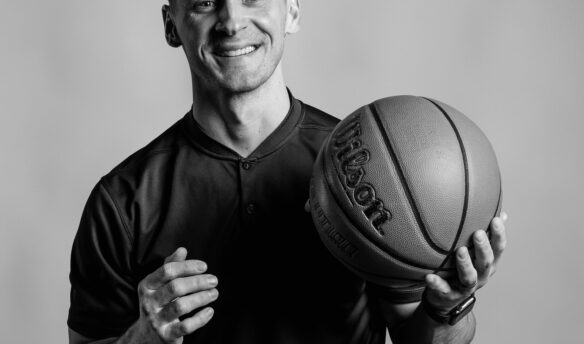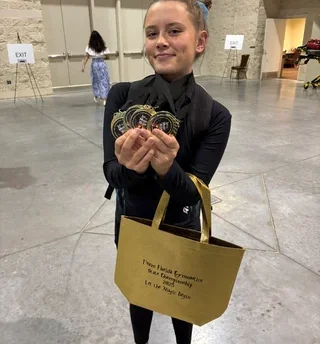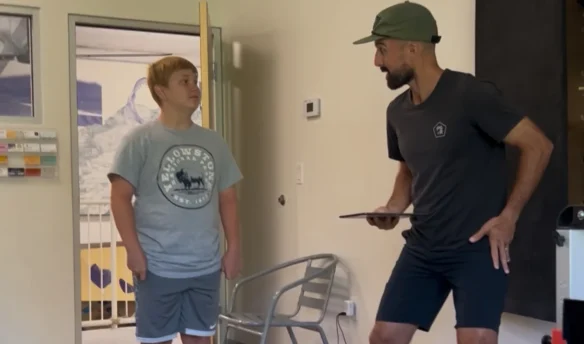Hey PS+R Community! Are you ready for some soccer?
Next month kicks off COPA America, the top men’s football tournament for teams across South America. This is the first time the United States has every participated in the tournament and games will be held across the country from June 20th to July 14th. Check out more details on the USMNT’s schedule below under Steve’s updates!
At PS+R, we spent ALOT of time (sometimes all night!) thinking about how to continue bridging the rehab to performance gap. Undoubtedly, rehab and performance both require building muscular strength. Building muscle mass is a key to longevity, wellness, injury prevention and meeting both performance and body composition goals. For most people, strength training is simple. Show up, perform key movements well, progress the resistance, repeat. Consistency and simplicity is the recipe for success. But for our college bound and professional athletes, we often take that a step further to better understand how to develop specific aspects of strength to optimize an athlete’s sport-specific performance. One way to do this is by assessing and understanding different types of muscle contractions using a combination of isometric, eccentric and concentric assessments on our Vald forceframe and force decks- all tools used within our performance evaluation battery for our clients.
But did you know that you can further specify performance gains by measuring how fast you are doing movements in a strength program? This technique, called velocity based training, or VBT, uses a fantastic piece of technology with a built in accelerometer to measure the speed of movements in a strength program. PS+R is proud to partner with output sports to integrate velocity based training into our strength programming. The use of the output sports wearable device allows us to not only accurately assess one rep max capacity on a sub maximal lift, it also allows us to tailor a strength session to develop aspects of movement like explosive power by dialing in the exact speed and load necessary to elicit these specific adaptations with each rep. Maximum strength output is only one small aspect of an athlete’s performance profile. How that athlete can use that strength over short and long durations is an absolute key to developing athletic performance.
Check out our client profile below to see how VBT and output sports became a critical component of physical preparation for a D1 football athlete recovering from shoulder surgery. If you’d like to explore how you can use VBT in your training or rehab program, reach out to Steve or Libby to learn more!
Libby’s Research
Libby was awarded a small grant from Texas Woman’s University to fund the initiation of her dissertation study entitled “Are clinical findings able to predict radiographic hip joint morphology and severity in skeletally mature adults with hip pain?” She is beginning data collection this month with a group of physical therapists, orthopedic surgeons and radiologists across two health systems this month in Dallas, Texas.
Where in the world is Steve and the USMNT?
Steve is on the road for 4-6 weeks with the United States Mens National team starting May 24th to take part in the Copa America (for the first time). Matches are scheduled in DC (vs. Columbia) Orlando (vs. Brazil), Dallas (vs. Bolivia) Atlanta (vs. Panama), and Kansas (vs. Uruguay). Tune in to FS1 to catch all the matches!
PS+R is happy to recognize Drake Lusk
This month’s spotlight is featuring local Saint Augustine High School football standout Drake Lusk. Following the conclusion of their season Drake had a surgical procedure to repair a torn labrum in his shoulder. For past 4-months he has diligently worked to bridge his rehab-performance gap to prepare for his Freshman season at Bryant University. PS+R thanks you for your commitment to the process and we can’t wait to follow your college career!

Drake’s rehab required a precise focus on readiness for football summer camp for his freshman season. This included an emphasis on heavy, sport specific lifting while still in the sling. Once Drake progressed from early rehab that required focus on protecting his operative shoulder, we were able to progress his sport specific readiness using velocity based training. Drake is wearing the output sport device on his wrist in the pictures on the right. Velocity based strength training is allowing Drake to effectively periodize and specify his training to build both power and max strength depending on the current training cycle focus.
Crosstraining an immobilized limb by using the strong limb
If you check out the pictures of our spotlight client below, you’ll see an unusual sight: someone in a sling lifting heavy weight in the noninjured arm. A common question we get during periods of immobilization is, well won’t I develop a muscle imbalance if train my healthy arm as I recover? The answer is not as simple as you might think! Immobilization of a limb has nearly immediate effects of muscle atrophy and loss of strength. In fact, in only takes about 48 hours for atrophy to begin to occur in an immobilized limb! Shoulder surgeries often require use of a sling to protect healing tissues for six weeks or longer. Mitigating this atrophy is critical to the long term outcomes of a surgical procedure- especially for an athlete working on a tight deadline to return to sport for scholarship or professional level funding. Cross-education is a term used to describe the process by which training one limb increases the strength of the opposite limb. This effect has been demonstrated in many populations including people with ACL reconstructions, fractures, stroke and in limb immobilization due to surgery. Cross education has been found in many studies to maintain the strength of the immobilized limb and even spares cross-sectional muscle size- quite the opposite of creating an asymmetry in strength, training the healthy limb will actually facilitate the very symmetry one is seeking while healing from a surgical procedure.
Check out this great review on the literature about cross training: https://www.josam.org/josam/article/view/54
Thanks for staying connected with us! See you around!!


